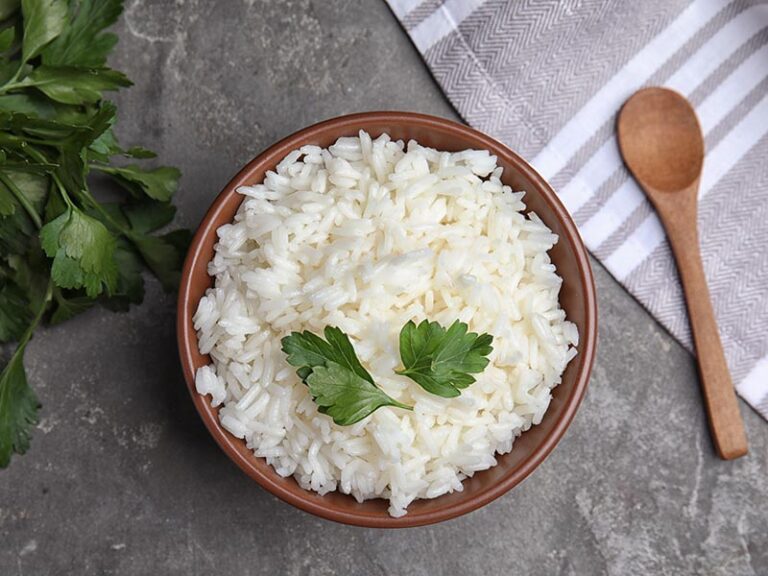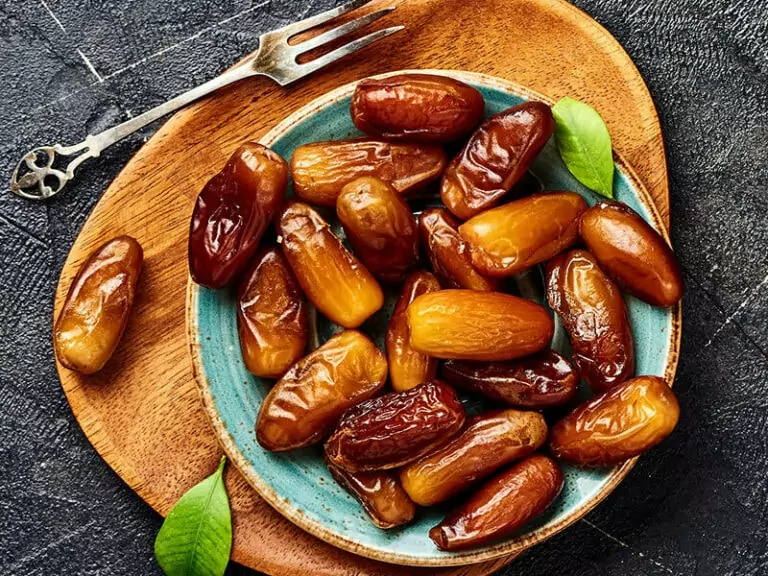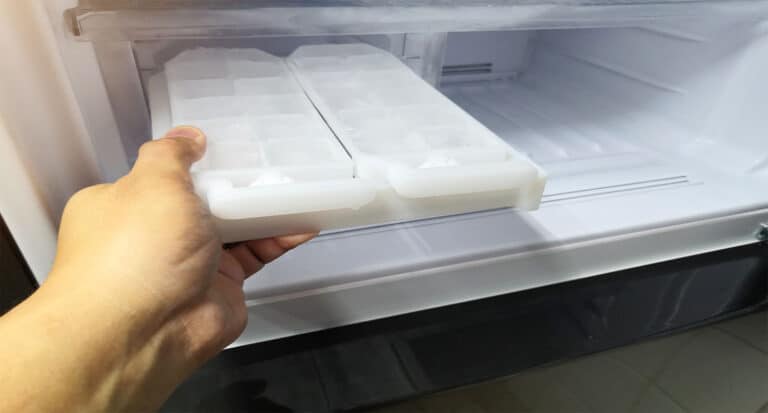Do you wonder how to store beets to keep them fresh and edible for a long time? If yes, this article is exactly suitable for you. Knowing these life tricks will enhance your living quality thanks to tasty and fresh meals.
Do you think only housewives are into this article? If you are a man browsing this article, I am sure you will be surprised. It not only helps you to find out the best way to store beets but also provides information about the number of nutrients in beets and their medical functions as well.
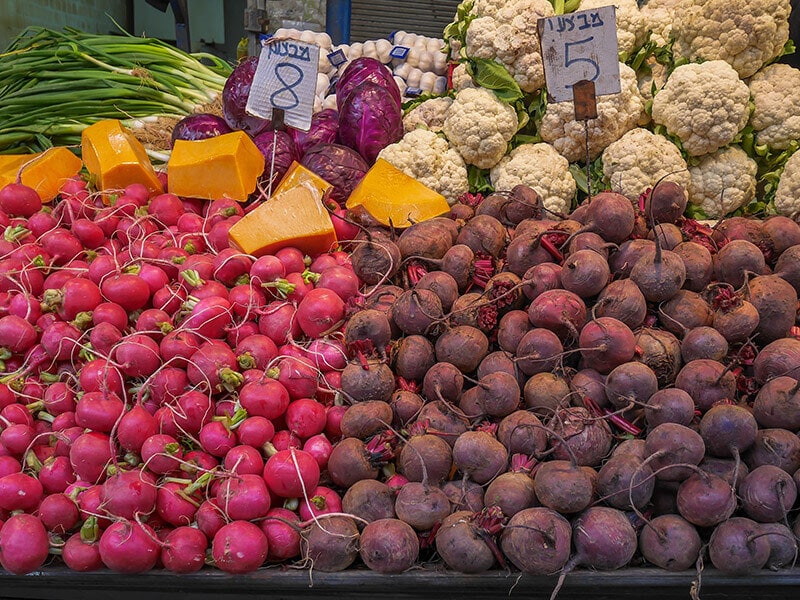
What Are Beets?
The beet is usually known as red beet, garden beet, table beet, golden beet, or dinner beet, which is mostly grown in North America, Eastern Europe, and India.
The taproot section of a beet plant is beet with dark red or plum color and rough skin. This color also makes beets stand out from other relative vegetables.
Beets resemble turnips and radishes in appearance, although they are not botanically related. Besides, it is necessary to distinguish between beets and sugar beets well-known in the production of white sugar.
Beet is one of the vegetables that contain numerous vitamins and minerals that the human body needs. This sort of food has the effect of improving resistance, supporting the treatment of diseases related to the liver and stomach.
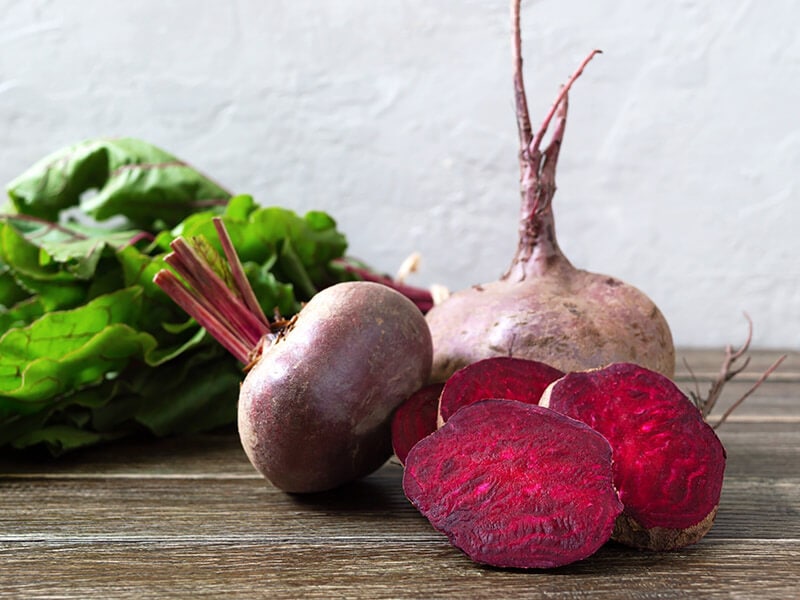
Easy And Time-saving Tips For Choosing Beets At The Supermarket
Beets are available all year; however, the peak season is from June to October. So, that’s the best time for you to buy beets with impressive qualities and the best price.
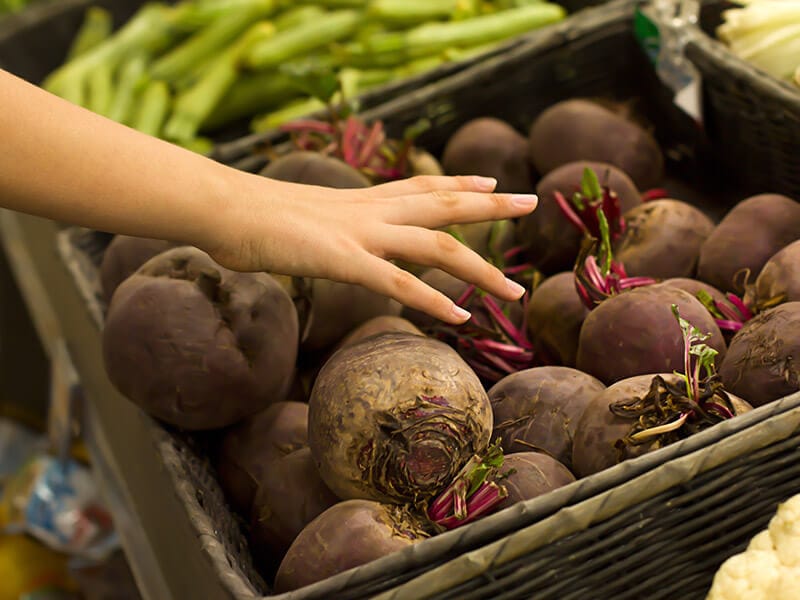
Well, you can easily find beets in any supermarket because they are popular and favored vegetables. But do you know how to choose beets? Rare people can recognize the features of a good beet.
Let’s check this list of characteristics that you should look for when buying beets from the supermarket.
- It’s a good idea when you make a plan. Your plan should include the number of beets you want to buy as well as the kind of food you want to cook.
- Choose beets that are firm and wrinkle-free skin because you can keep a firm tuber longer without spoilage or wilting.
- Round-bottomed beets are sweeter than flat-bottomed beets.
- The best size of beet is approximately 1.5 to 2 inches in diameter.
- You can keep tubers with green stems or shoots for a longer time, and their taste is also sweeter. If beet shoots begin to wilt, it verifies the first symptom of the aging process.
- It’s better to select beets coming in a bunch. It is the signal of their fresh and new features.
All things you need to know about beets. This really interesting and useful video is willing to help you.
How To Store Beets To Extend Their Shelf Life And Preserve Nutrients
Many friends usually ask me this question. I know it also concerns others, especially in this modern life with the development of fast food and unhealthy snacks. So, I decided to write all I know and experience in this field to help my readers know about diet and healthy food.
Method to keep beets for a long time without changing the number of nutrients is attached. If stored improperly, it will take your money away when beets become easily spoiled and unusable. Sometimes, it may even harm your family’s health.
Generally, it’s quite easy to store beets. It is appropriate for everyone to store them in the fridge for about 2 weeks. Or you can put beets directly in the freezer to preserve them for 12 to 18 months.
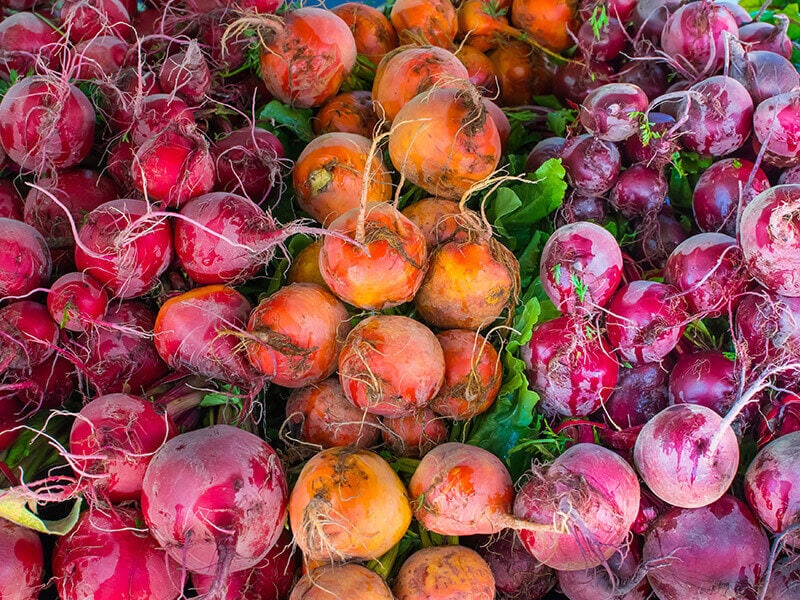
Many people thought that those kinds of tubes such as beets, potatoes, sweet potatoes, radishes, carrots, etc. do not need to be kept in cold condition. However, it’s not true. If they are stored in the normal atmosphere, they will sprout soon.
And seriously, they become harmful after that. You should be extremely careful when preparing and cooking meals with germinated tubers.
These are 5 typical ways of keeping beets at your home. You can follow these rules to make sure that your beets are in mint condition.
Store Fresh Roots In The Refrigerator Will Solve Your Concern
It is also called a short-term method because it can store beets for up to 3 weeks. These steps will guide you on how to do it.
Step 1: Get Your Beets Ready To Store
Cut stems, leaves, and rotten parts to make sure beets are in good condition. Don’t wash them. Use rags or your fingertips to remove sand or dust.
Step 2: Put Them In Containers
Place the tubers in glass, plastic boxes, or any zip bag, which helps minimize the amount of oxidation. If you don’t have any listed containers above, you can use cling film to wrap them.
Step 3: Label Them To Remind Your Memory
A label is used to keep track of the tuber storage’s start date. This is a good habit to instill in all of the other food you keep in your fridge or warehouse. It reminds you to remember the date you store food.
Anytime you want, you can confidently select items to cook before they lose nutrients or perish. It also relieves the burden of mechanical memory for housewives.
Step 4: Get Your Storing Method Done!
Place the container in your fridge. It’s better to put it in crisper drawers which help fruits, and vegetables stay fresh longer by controlling the airflow and humidity around them.
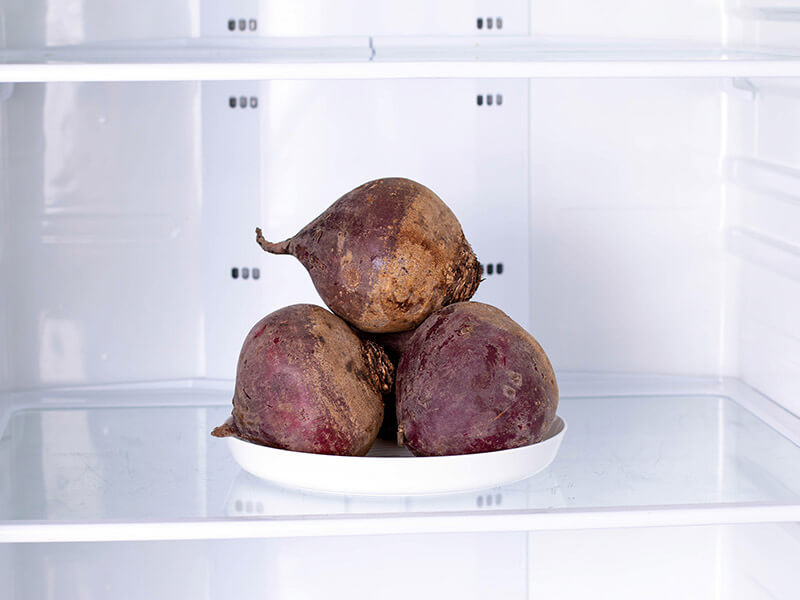
Keep Beets In Root Cellar Can Expand Their Lifetime
It can store beets for up to 3 months. A root cellar is used to preserve root vegetables such as carrots, radishes, potatoes, turnips, and beets.
Technically, a root cellar is used for storage thanks to the earth’s inherent cooling, insulating, and humidifying capabilities. It is usually seen on a farm where peasants want to keep their agricultural products.
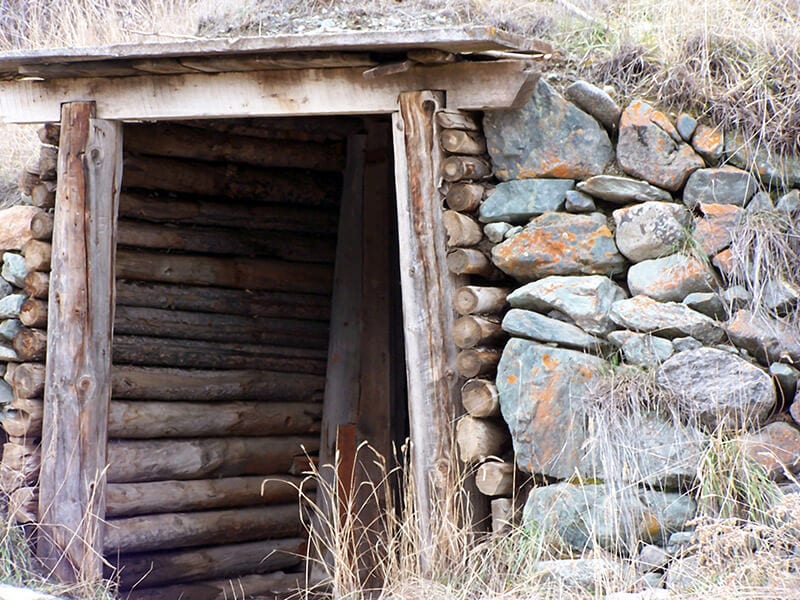
Step 1: Build A Good And Sustainable Root Cellar
Choose a suitable location for constructing a root cellar. This cellar needs to be airtight and get minimal direct sunlight. A root cellar’s typical depth is approximately 10 feet (3 meters).
Step 2: Keep The Good Storing Environment
Maintain temperature and humidity in the cellar at a stable level.
- Suitable temperatures are between 32 and 40°F.
- The humidity of 95% is perfect.
Step 3: Clean The Tubers
Clean beets by trimming their leaves and stems to save space, or leave the whole tuber.
Step 4: Bury The Tubers In Buckets
After putting beets in buckets that are filled with moist sand, peat moss, and sawdust. Avoid trying to pack too many tubers into a single bucket. A spacing of 1-2 cm between them is ideal.
Step 5: Close The Lids
Cover each bucket with a tight-fitting lid to maintain a constant level of moisture in the bucket. Do not seal the lid too tight because it is vital to allow airflow to circulate and breathe.
Step 6: Check The Storing Regularly
Check the moisture content of the sand and peat moss to make sure it’s appropriate. The usage of humidity and temperature gauges can be beneficial.
Regular checks also help to detect tubers with signs of damage for timely removal.
Root Cellar – a practical solution for storing beets. See how it’s carried out.
Using Pickled Canned Method To Keep Beets
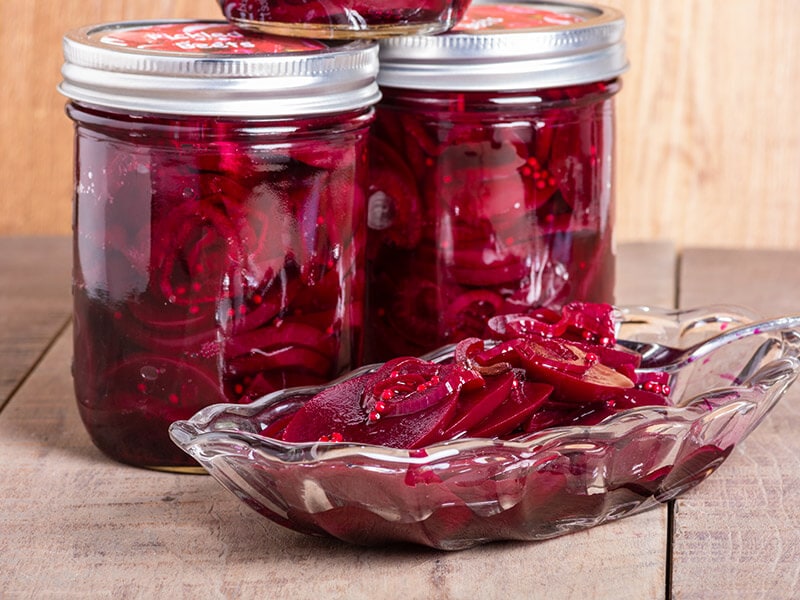
Have you ever tried pickled canned beets? Canning is the most long-term method of storing beets. Canned beets can be saved for 1 to 3 months once opened or 12 to 18 months with unopened jars. You are lucky because I’m going to reveal the tastiest recipe to help you pickle your beets.
Step 1: Make A Good Preparation
Ingredients should be included:
- Water: 2 cups
- White vinegar: 2 cups
- Sugar: 2 cups
- Salt: 1 teaspoon
- Beets: 3 ½ pounds
- Onions: 1-2 bulbs
- Canning jars. Using a glass jar to preserve pickled beets is best because the glass does not react with the brine of the vegetables.
Metal or plastic containers should not be used as they can react with the vegetable brine and damage the beets.
- Rings and lids
Step 2: Clean The Beets
Begin by cleaning the beets. You can keep the root intact and trim the leaves to about an inch. Remove skins and cut rotten or wormed parts out.
Step 3: Cook The Beets Until They Are Soft
Fill a large kettle halfway with water. Place beets in it. Then, wait until it’s boiled. You can use a fork to check whether it’s thoroughly soft. Because beets vary in size, they may require different time duration to cook. So you can take them individually out as needed.
Step 4: Cool Cooked Beets
After taking them out, let them cool naturally or soak them in ice water. Then, cut the beets into smaller slices.
Step 5: Make Vegetable Brine
Place vinegar, water, and garlic in a small saucepan. Boil and stir, then turn the heat down to a simmer. Cook the mixture for about 5 minutes, and then turn off the heat. Let it cool thoroughly.
Step 6: Place Sliced Beets In Jars
Sliced beets are a popular choice when pickled, but you can also cut them into bite-sized chunks or pieces. Put them in enough jars slice by slice. Then, put onions which are cut into slices, on the top, which is about 1 inch from the lid.
Step 7: Pour Brine In Jars
It’s time to pour cooked vegetable brine over the beets in jars. The water should be enough to completely cover the beets and onions.
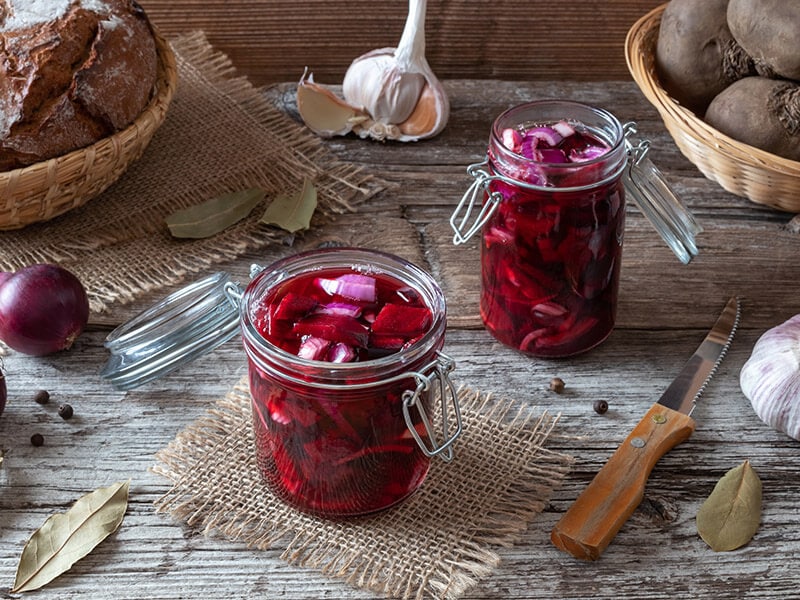
Step 8: Cover The Jars
Cover the jars with rings and lids. Remember to not cover too tight since lids may buckle as a result of this.
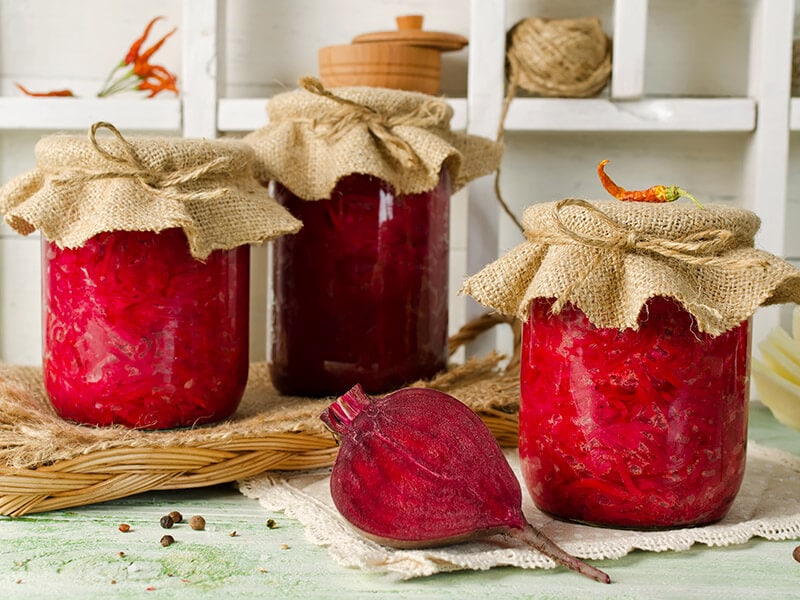
Step 9: Do The Water Bath
Boil a large kettle of water and be equipped with a rack at the bottom over high heat. This is going to be utilized as a water bath.
Then, place all jars in the water bath, and after that, boil water for nearly 10 minutes.
Step 10: Get Everything Done!
When water is boiled, take jars out and let them cool before touching them by hand. You can keep these jars in your fridge or normal.
How to can pickled beets for long storage. A delicious dish as well.
Freezing Is Something You Need For Storing Cooked Beets Longer
This is a long-term solution for beets storage. Whether you are a food lover who usually hunts harvesting deals or you are a farmer who wants to store your vegetables for family needs. You are here to find out the best solution.
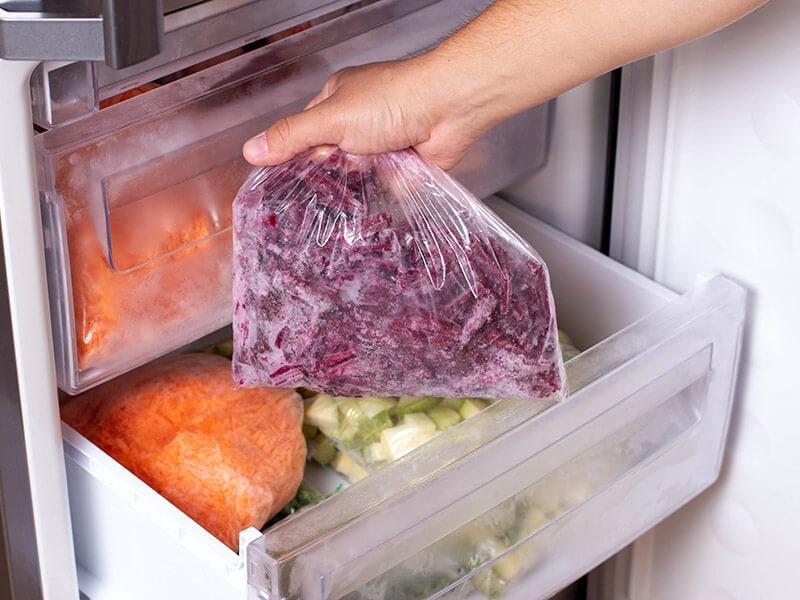
Follow these steps to make sure that nutrients in beets do not go away:
Step 1: Clean The Beets
Remove stems, leaves, skin, and rotten parts. Wash the beets to make sure they don’t remain any dust or sap. Then, cut them into 1 inch thick slices (about 1.2 to 1.5cm).
Step 2: Cooked Beets Until It’s Soft
Boil beets until it is mushy (about 20 to 45 minutes according to their size). To check if the tuber is thoroughly cooked, stab it with a fork.
Step 3: When Your Beets Are Being Hot, Cool Them!
Use cooled boiled water or an ice bath to cool beets. Until the beets are not hot anymore, take them out.
Step 4: Smaller Pieces
Cut cooked beets into smaller shapes according to your intention. Usually into bite-sized squares or rectangles.
Step 5: Keep Them In Sealed Glass Or Plastic Boxes.
Put pieces of cooked beets in glass or plastic boxes. If you don’t have any boxes, food wrap is used instead.
Step 6: Freeze Them!
Put those containers in your freezer for storage. It can be kept for up to 12 to 18 months. The most appropriate temperature should be 0° F (-18° C).
The better storing method you have, the more nutrients you keep.
How To Store Beets By Dehydrating Method
Dehydration is something you may not be familiar with. But this is a magical method that can help you to preserve beets for up to 33 years. It is a really easy procedure, although it requires using a dehydrator to carry out. Let’s see how this method works.
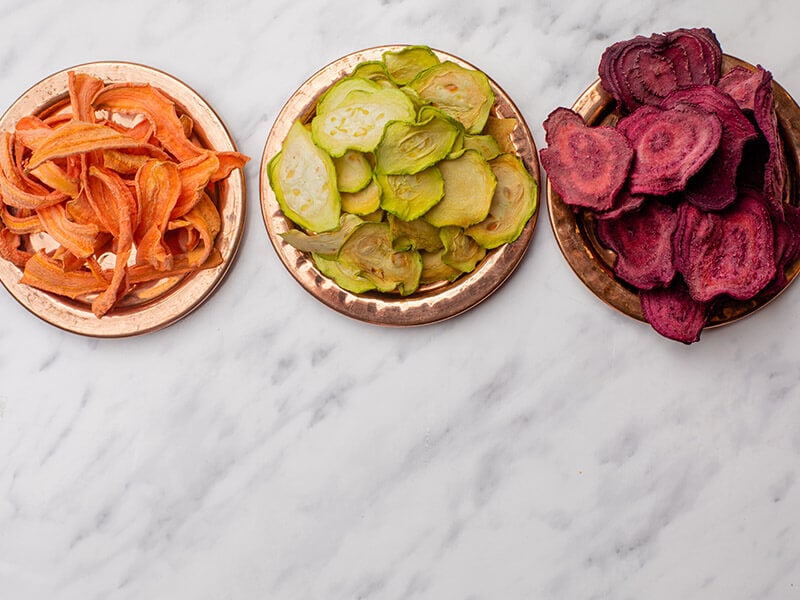
Step 1: Clean Beets
Cut stems and leaves off. Then, peel the beets and wash them carefully with fresh water. Remember to remove rotten or wormed parts. Let them drain before conducting the next step.
Any microorganisms should be removed because if not, they will stay and grow while dehydrated beets are stored.
Step 2: Cut Beets Into Slices
⅓ – ¼ inch is likely to be the suitable thickness of sliced beets. You can cut them into smaller shapes to keep them easier. But, keep in mind that after dehydrating, beets will shrink to make their size much smaller. So just choose the need-fitted size.
Step 3: Lay Sliced Beets On The Tray
When using a dehydrator, it also includes many trays for you to lay your stuff. Spread them evenly on the trays and try not to overlap.
Step 4: Set Up The Dehydrator
Set the temperature of the dehydrator at relatively 125ºF (or 52ºC) to have the best condition.
The duration may vary depending on the thickness and density of sliced beets. It’s usually from 8 to 12 hours. It is necessary to check after eight hours and decide whether they need more drying or not.
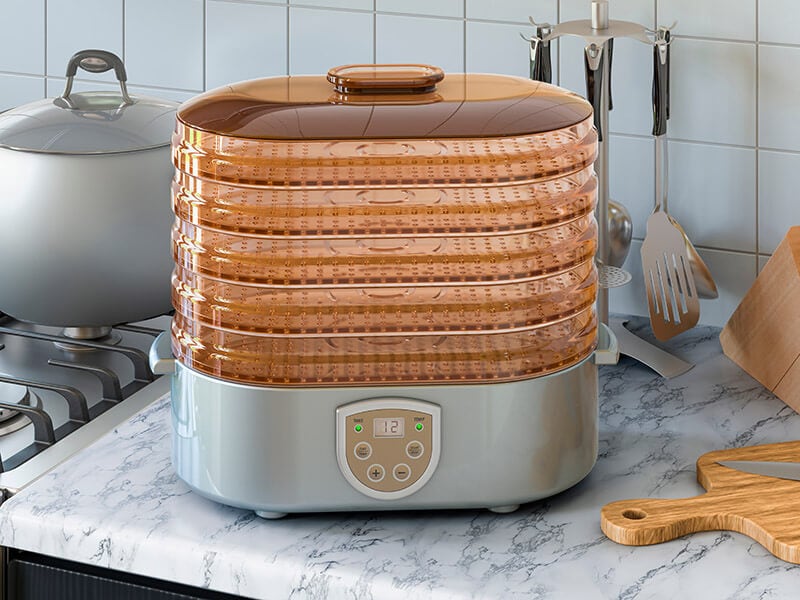
What If You Don’t Have A Dehydrator?
It’s alright, you can use an oven instead.
Set the temperature at 120 to 140ºF (or 50-60ºC). Put the trays in the middle of the oven to make sure that beets will receive equal heat. The duration should be 8 to 10 hours. Check it regularly to ensure beets do not burn.
It’d better flip slices every hour to prevent them from getting burnt. It also helps to dehydrate them quickly.
Step 5: Take Them Out When Ready
The signal to show the process is completed is that the beet color becomes vibrant red. They also have certain crispiness, like the canned potato chips you often eat. It’s time to take them out.
Step 6: Store Them In Suitable Containers
Storing environment should be airtight as it helps to keep the crispiness of the tubers. Containers can be glass or plastic jars and boxes with fitted lids. Put them in place, avoiding direct sunlight.
NOTES: You can either keep the slice-sized shape of beets, or you can puree those slices of beets into a powder. You can use it to add to cakes or any other dish you like as a natural flavoring.
How to dehydrate beets in the right way? This is useful for very long-term storage.
How Long Do Beets Last In Different Conditions?
As you browse this article, you know that in different conditions, beets can be kept for a different duration. Each method has its pros and cons. Let me show you the comparison between them.
Ways For Storing Beet Greens
Apparently, beet is a kind of vegetable that supplies a lot of benefits for human health. It’s not only the tubers but also its greens. Beet greens are commonly used for many delicious side dishes or soups with a rate of nutrients. Let me emphasize some tips for storing them.
Storing Beet Greens By Freezing Can Be Utilized
It’s also easy as beets storage. You can blanch or stir-fry them before freezing. Jot down these steps to conduct:
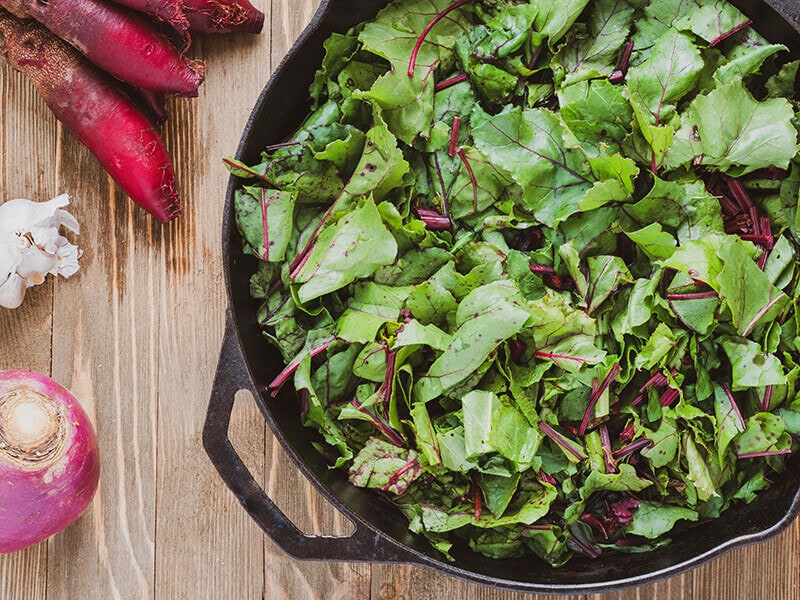
Step 1: Clean The Greens Beforehand
Choose young, fresh, and healthy leaves that are not wilted, or eaten by pests. Old leaves often have little nutrients and are too chewy, not tasty. Remove weeds or yellow parts.
Wash carefully with saltwater because beet greens are where most of the soil and pesticides are attached.
Step 2: Blanch Or Stir-fry Beet Greens
Blanching: Blanch a suitable amount in boiling water. Keep them in 2 minutes, and then take them out.
Stir-Frying: Boil a little oil on a high fire. Then stir-fry the beet greens in 2 or 3 minutes and take them out quickly to maintain the freshness of leaves.
Step 3: Cool Beet Greens
Use ice or cool water to chill them out. It helps to preserve the freshness of leaves and keep them for a longer time.
Step 4: Pack Those Beet Greens
Put them in glass or plastic containers for storage. Then, arrange them neatly in your freezer according to the time of storage. It is advisable to use them as soon as possible to enjoy the best quality and freshness.
Besides, there are other alternative methods used for storing beet greens. They are also the same as other vegetables such as salads, spinach, and kales. You can keep them in your fridge after removing rotten parts.
Remember to not wash vegetables before putting them in the fridge. It will make your vegetables soggy soon. This way helps to keep greens in 2 weeks. But many people claim that the finest flavor comes from utilizing the greens within 2 to 5 days of purchase.
Another way is canning pickled beet greens. As you have read the way to can your beets above, you can apply it to beet greens as well. Of course, the spices can be adjusted according to your taste.
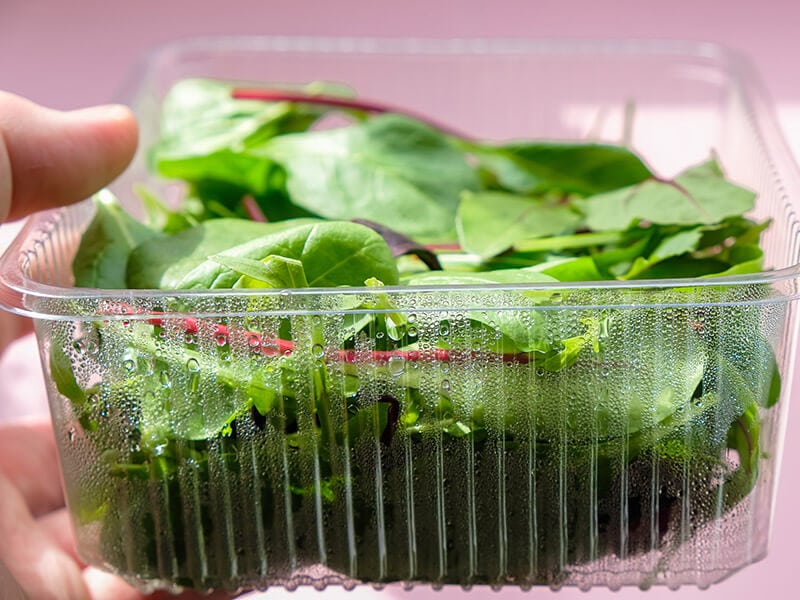
How To Tell If Beets Have Gone Bad?
Honestly, those methods above are quite relative. If you don’t check them regularly and carefully before use, you may use rotten vegetables, and your meals will become awful. I suggest some signs that you can use to realize when your beets go bad.
Mold
If you notice mold on your fruits or vegetables, you should chop off the moldy area and utilize the remainder. The trouble was that the fungus didn’t simply harm the visible sections of beet, it also spread its poison throughout the others.
In this scenario, removing the entire beets is the best option. Moldy parts really affect your food quality and even harm your health seriously.
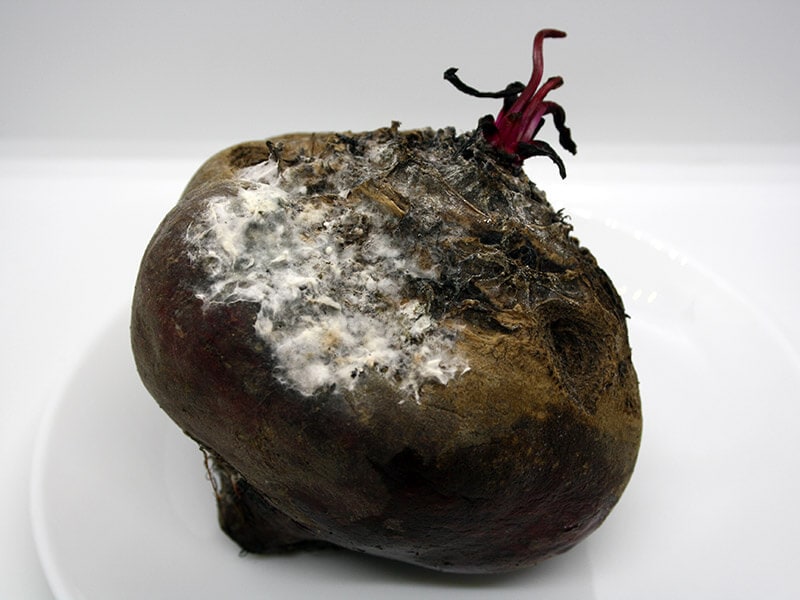
Smell
If the smell is like something burning, remove them from the rest quickly. Because they can affect the others soon. Usually, the smell of a fresh beet is like the smell of soil. So, when beets go bad, their earthy smell goes away too. Only the unpleasant smell remains.
Sometimes, it may be difficult to say if something is fresh by scent, but in certain circumstances, it works.
Texture
Normally, it is believed that the tubers of beet are firm and solid, which shows their freshness and sweetness. Thus, when you notice these signs included here, it means that it’s time to let them go away.
- The tubers have softened and are no longer firm. Or somewhere soft and somewhere hard.
- The skin has wrinkles on it. This is a sign of fading, as well as a lack of water and moisture. The beets have lost their natural nutrients as a result. So, it’s no longer worthwhile to use.
- Beet color is unusually dark and light. The skin is covered in bruises.
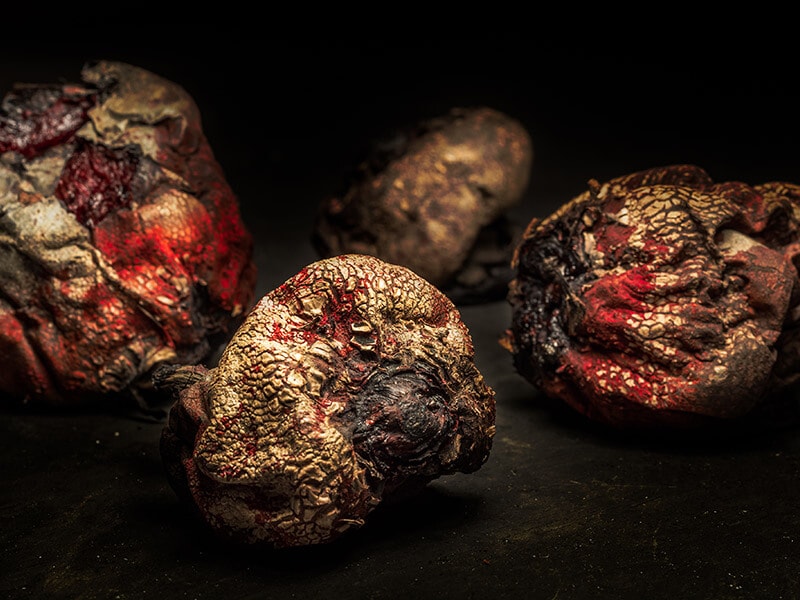
Taste
It’s the last feature that you need to consider because I don’t think it’s a pleasant feeling when you have to taste a rotten beet.
When the beet begins to decay, its flavor changes apparently, becoming strange from its normal taste. It usually has a harsh and sour taste.
The way to check if your beets are about to go bad is very simple. After a few weeks of storage in the fridge, you should try taking it out to check. If the flavor becomes somewhat bitter, which means that the part has or is about to perish, it should be discarded immediately.
Nutritional Information Of Beets Will Surprise You
According to The U.S. Department of Agriculture, it’s clearly seen that the amount of Calories, Carbohydrates, and sugars is rather higher than other relative vegetables. The beets are also the crucial source of various vitamins as well as typical minerals. (1)
Beets – Nutritious And Delicious Vegetables With Plenty Of Benefits
Over the past years, beets have been recognized for their incredible benefits to human health. Eating beets can help to prevent heart disease, cancer, strengthen the liver, reduce inflammation, cure stomach problems and control blood pressure, and so on.
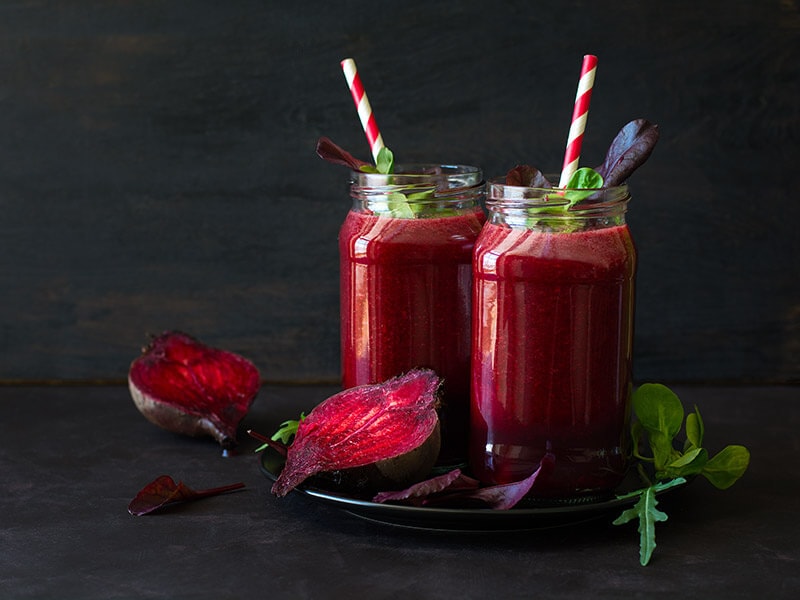
Prevent Heart Disease And Stroke
High blood pressure is the key risk factor for heart attack and stroke. Beet juice has been declared to help lower high blood pressure. A glass of beets juice in the morning will change your life.
Refresh Yourself
Everyone who cares about beauty and youth will like this function. It is called an anti-aging function thanks to serotonin generated from red beets. Betacyanins in beets can help reduce stress and tiredness after your hard-working time. So the more beets you eat, the younger you look.
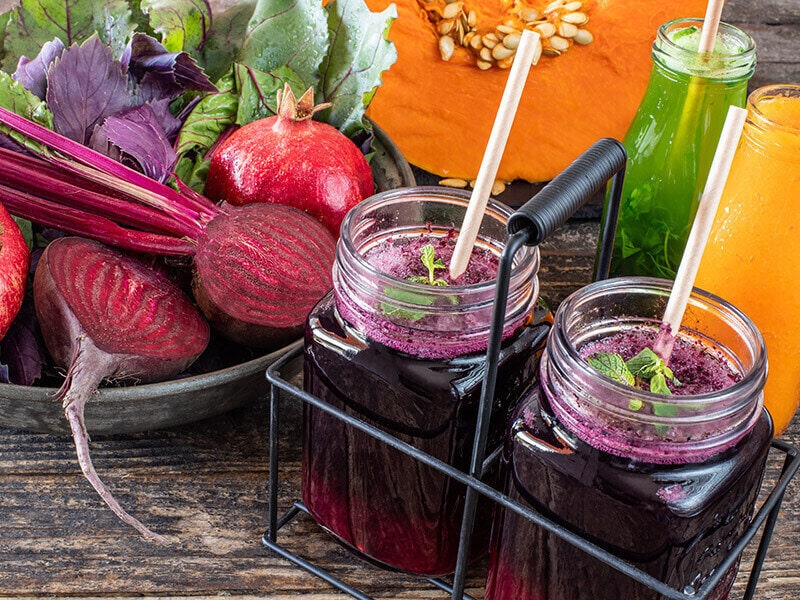
Be A Part Of Detox Diets
Nowadays, detox juice is trendy for most people who tend to have a healthy and balanced life. The number of people searching for detox recipes rises more and more day by day.
But there is another easier way. Beets and other vegetables available at the supermarket will bring you a handmade detox juice that can be adjusted by yourself. It’s quick, cheap, and effective.
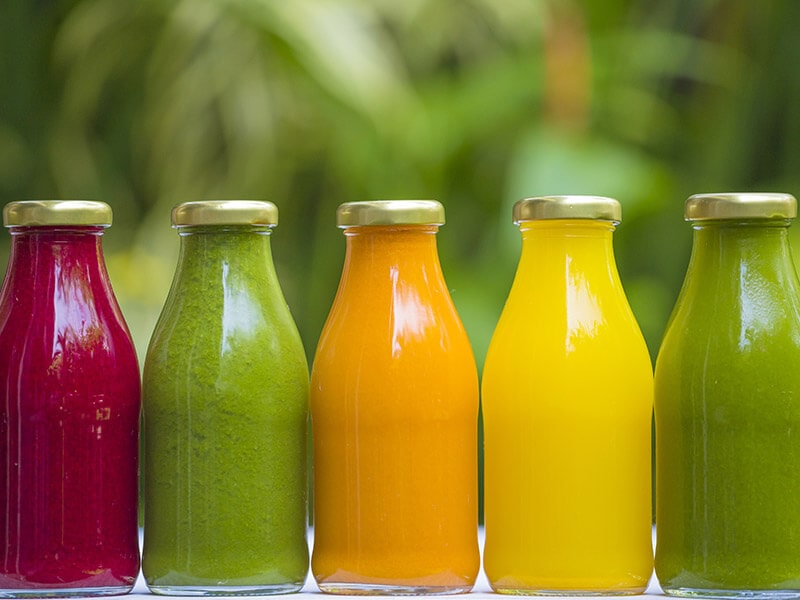
The choline in beets is a sufficient detoxifier for your liver and helps detoxify the entire organ system. Especially, it removes the pain and toxins remaining due to excessive alcohol abuse in the past.
Bear These Important Notes In Mind When Using And Storing Beets
Remember that everything has two sides. So do beets. Beets can cause poisoning if overused or used in the wrong way. These are some notes that may be important to you.
- Do not wash beets and beet greens before storing them in the refrigerator.
- Check the freshness of beets carefully during storage.
- If beets germinate during the storing period, remove them from the rest.
- Remember to peel before cooking beets.
- When cooking beets, avoid using excessive heat since it eliminates essential nutrients.
- Beet juice should not be drunk by children under the age of six months since it might cause poisoning.
- People who have had oxalate-containing kidney stones should avoid eating or drinking beets.
- Because beet juice is so intense, you’d rather not drink too much of it at once, especially if your body is not accustomed to it.
- For beginners, a half tuber a week is enough. Then, gradually increase it to a whole beet once a week.
- You may feel dizzy the first time you drink it because it is cleansing your stomach and liver, the toxins are being removed.
FAQs
After jumping into this article, how do you feel? This is a nutritious and valuable vegetable. And here, I will include the answers to the most frequently asked questions that may be helpful to you.
Are They Really Useful Tips?
Well, you see? Reading this article is worthwhile, right? After finishing this reading, you earn a lot of informative tips, methods, and notes about beets. I’m sure that this will help to improve your life and meals so much.
So, don’t forget to share this helpful information with your friends, family, and relatives. Knowledge will ease your life and enhance your living standard.
References
- FoodData Central. 2021. [online] Available at: <https://fdc.nal.usda.gov/ndb/search/list?qlookup=11080&format=Full>.
- Wrocławski, D., 2021. Best Refrigerator Temperature to Keep Food Fresh. [online] Available at: <https://www.consumerreports.org/refrigerators/best-refrigerator-temperature-to-keep-food-fresh-a2285610987/>.


